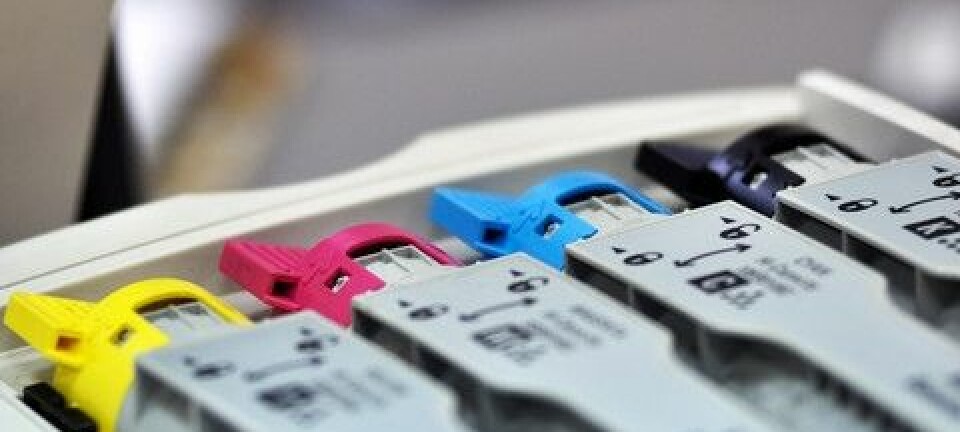
Nanoparticle may boost blood clot drugs
Danish chemists have set out to create a special nanoparticle that can detect and eliminate atherosclerosis before it turns into a blood clot.
It may soon be possible to conquer atherosclerosis using nanoparticles and a laser.
A team of Danish chemists has just embarked on a five-year research project in which they aim to find out what a nanoparticle for the preventive treatment of blood clots might look like.
One of the tasks of this nanoparticle is to identify the so-called atheromatous plaques. These are accumulations and swellings in artery walls that can develop into blood clots.
The nanoparticle will also act as an antenna for infrared light.
The idea is to insert a catheter with a camera and laser into the blood vessel and illuminate the plaque from the inside.
The Danish team is competing with three other research teams to develop a solution for a comprehensive EU-funded research project called CosmoPHOS.
Differences between plaque types
The Danes are hoping to find some special properties in the dangerous types of plaques, properties which enable the nanoparticle to detect them and bind to them. This involves examining the surface molecules of the plaques:
”We’ll be looking for a difference between two types of plaque. We know that they behave differently. Sometimes the plaque is stable and other times it’s unstable and turns into a blood clot,” says Associate Professor Jørn Bolstad Christensen, of Copenhagen University’s Department of Chemistry.
”We may find some small molecules that are only formed in the dangerous type. We will then be looking at whether we can exploit that difference.”
Shattering plaques with infrared light
Our nanoparticle needs to be large enough for it not to leak out from the bloodstream and into the surrounding tissue, but also small enough for the immune system not to perceive it as harmful.
Once the nanoparticle has attached to the plaque, it will take on a function similar to that of the antenna on a mobile phone so that when it is illuminated with infrared light, it destroys the plaque in the blood vessel wall.
”The idea is to insert a catheter with a camera and laser into the blood vessel and illuminate the plaque from the inside. Rather than translating this energy into speech or text messages, the particle will trigger some processes that will crush the plaque,” he says.
This presents some special challenges, since the nanoparticle has to be injected into humans. That requires not only the right structure but also the right size.
”Our nanoparticle needs to be large enough for it not to leak out from the bloodstream and into the surrounding tissue, but also small enough for the immune system not to perceive it as harmful. In addition, we probably need to avoid certain structures that also trigger a reaction from the immune system. And then, obviously, we also need to make sure it isn’t toxic,” says Christensen.
Drug reduces blood clots in heart and brain
Cardiovascular disease is more common in men than in women and in addition to genetic factors, the causes include:
- Smoking
- Lack of exercise
- High blood cholesterol and blood pressure
- Diabetes
- Stress
- Overweight
If the researchers succeed in developing the nano drug, it can probably reduce the number of blood clots in the brain and the heart.
In the heart, severe hardening of the arteries and blood clots can block the blood flow. When the oxygen disappears from a section of the heart, the tissue starts to die out. It is this process that the new treatment aims to stop before things go wrong. The infrared light will smash up the plaque into tiny pieces so that it cannot attach to e.g. the brain and form a blood clot.
The Danish team is currently in the initial stage of their experiments with nanoparticles. They are, however, confident that they will be conducting preliminary human trials within the next five years.
”Treatment with nanoparticles is still in its early stages,” says Christensen. “There is only one company, from Australia, that has had success in developing drugs with nanotechnology. But I’m sure that we can create the particles we have promised. We already have all the tools we need.”
---------------------------
Read the Danish version of this article at videnskab.dk











